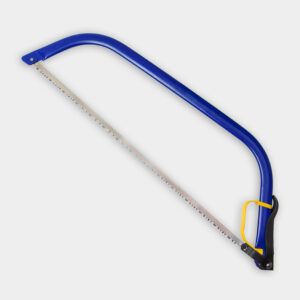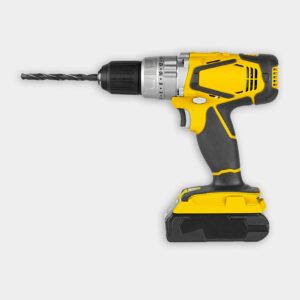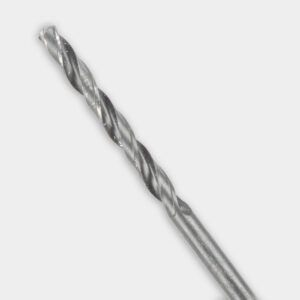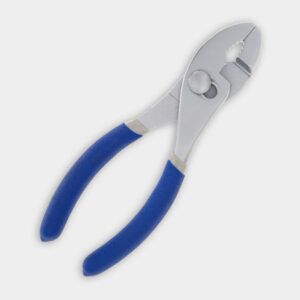Project details
Skill
Cost
Estimated Time
Building a water rocket is an educational project that’s hands-on fun for the whole family. This simple yet exciting experiment uses everyday materials to create a rocket propelled by water and air pressure.
In this video and guide, This Old House building experts demonstrate how to construct a water rocket launcher using PVC pipes and other readily available materials.
Materials and Tools for a Water Rocket
Before diving into the construction process, gather the following materials and tools.
Materials
- 1/2-inch PVC pipe
- 2-liter soda bottles
- Cable ties
- Duct tape
- Hose clamp
- PVC end caps
- PVC tee connector
- PVC pipe cleaner
- PVC pipe cement
- Tire valve
Tools
- Bicycle pump
- Drill with 1/4-inch and 1/2-inch bits
- Hacksaw
- Pliers
- Scissors
DIY Water Rocket Project Overview
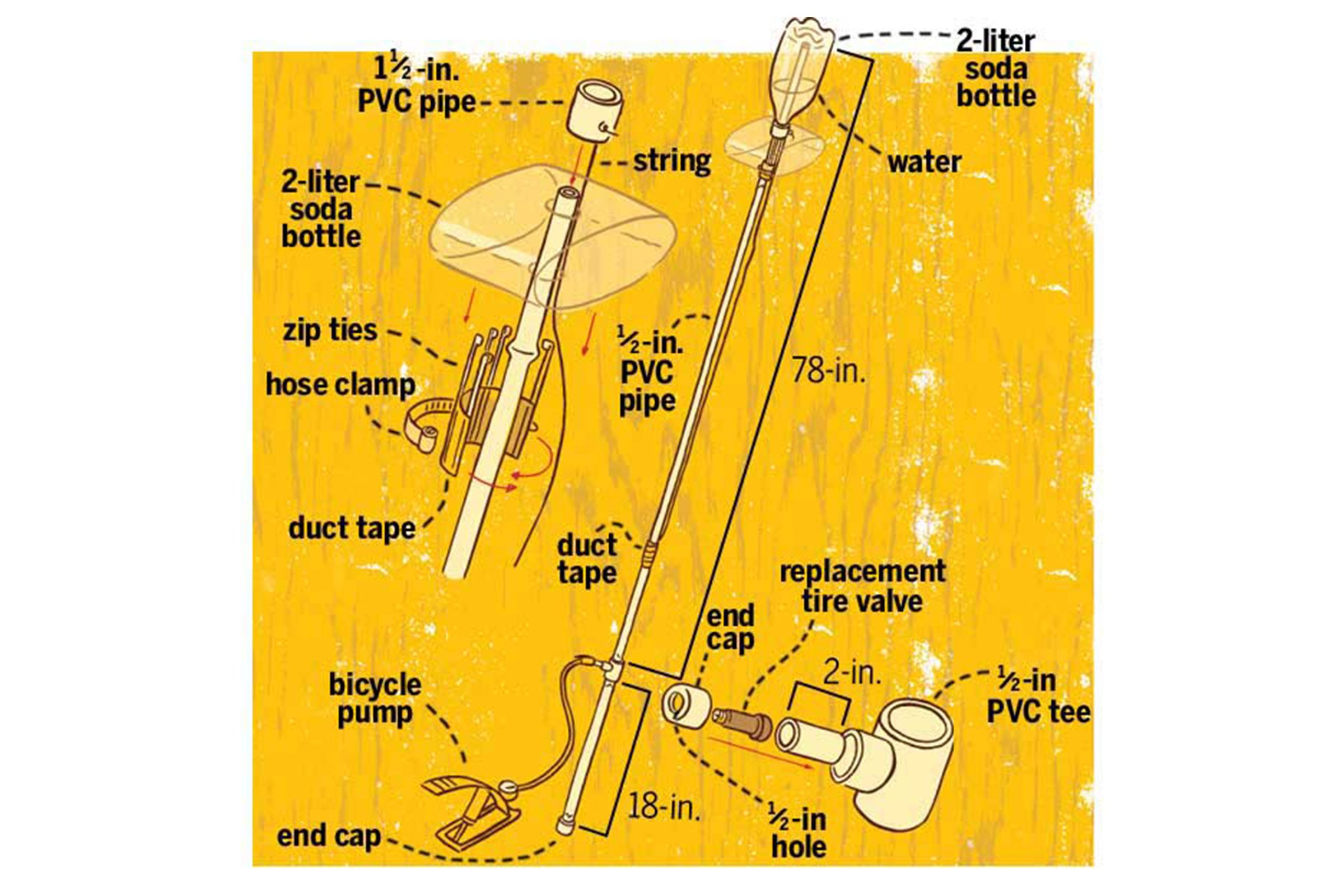
Age Range: 7 and up
A sudden release of pressurized air is what will propel this rocket, so all the parts need to come together with tight seals to hold the pressure in until you’re ready to launch. PVC plumbing pipe won’t leak if you use the right pipe cement and thoroughly clean all the connections before gluing them together.
A simple string-controlled trigger unlocks the pipe from the end of the bottle, releasing the pressure and sending the bottle into the sky.
Steps for Building a Water Rocket
Step 1: Cut the pipe
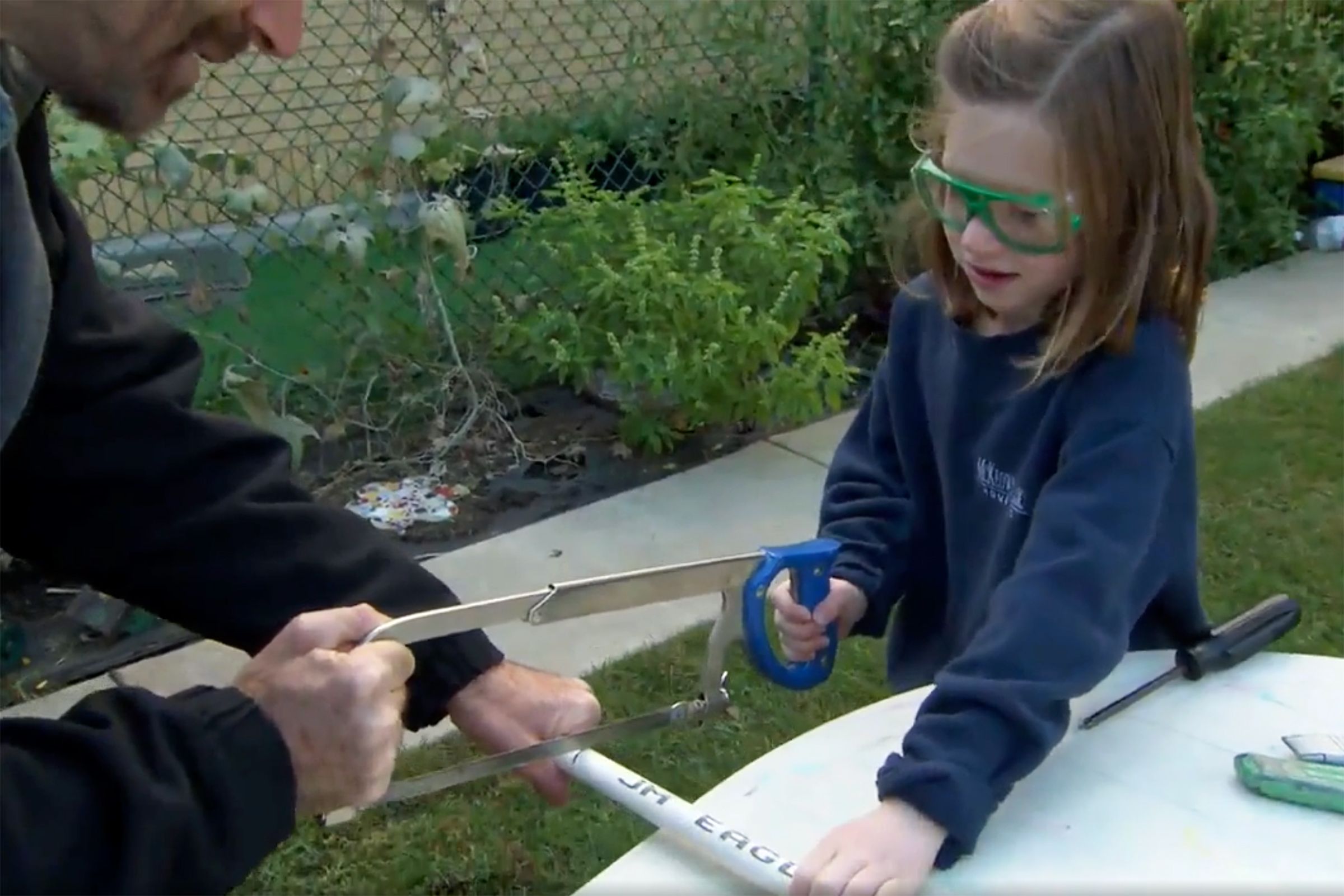
Cut three lengths of ½-inch PVC pipe using the hacksaw: 2 inches, 18 inches, and 78 inches.
Step 2: Drill a hole for the valve
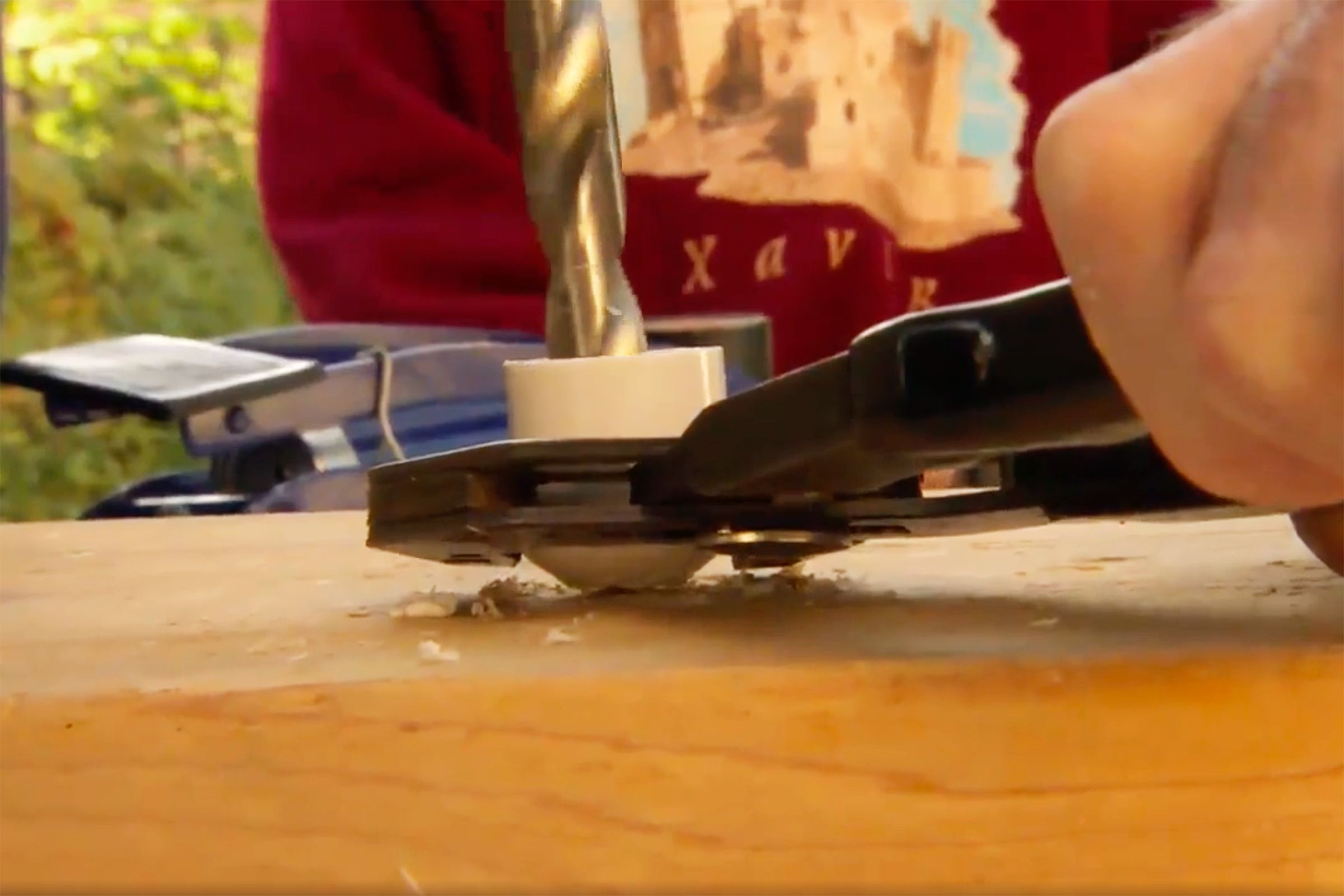
- Using the drill/driver fitted with a ½-inch bit, make a hole in the top of one of the PVC end caps.
- Hold the cap steady with pliers as you work, and make sure to drill straight down into a piece of scrap wood.
Step 3: Connect the valve
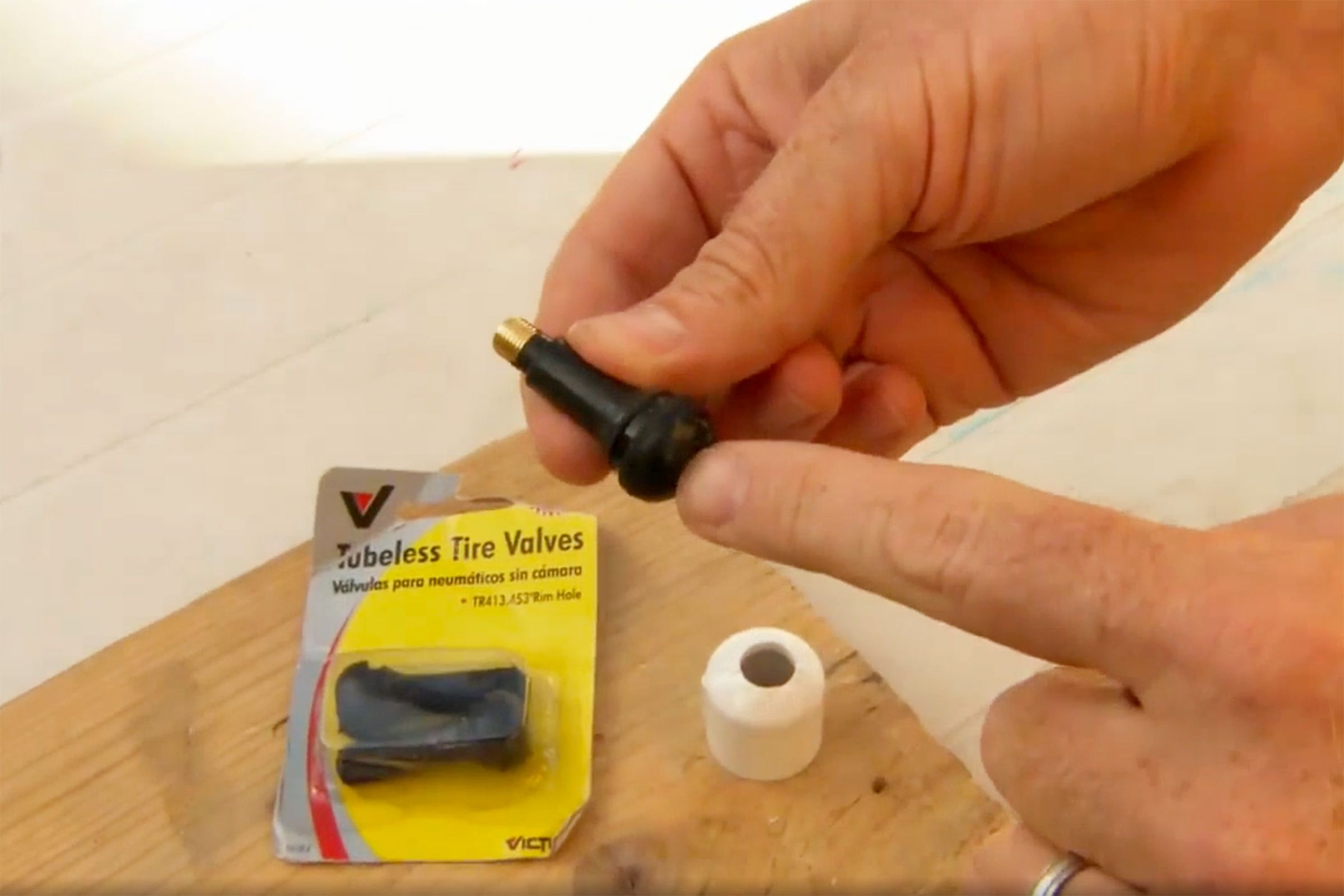
- Remove the small cap from the tire valve and set it aside. Slide the valve through the hole in the PVC endcap so that it sticks out the top.
- Screw the valve cap back on.
- Grab the end of the valve with pliers and pull it until it’s firmly seated in the PVC end cap.
Step 4: Glue the launcher parts together
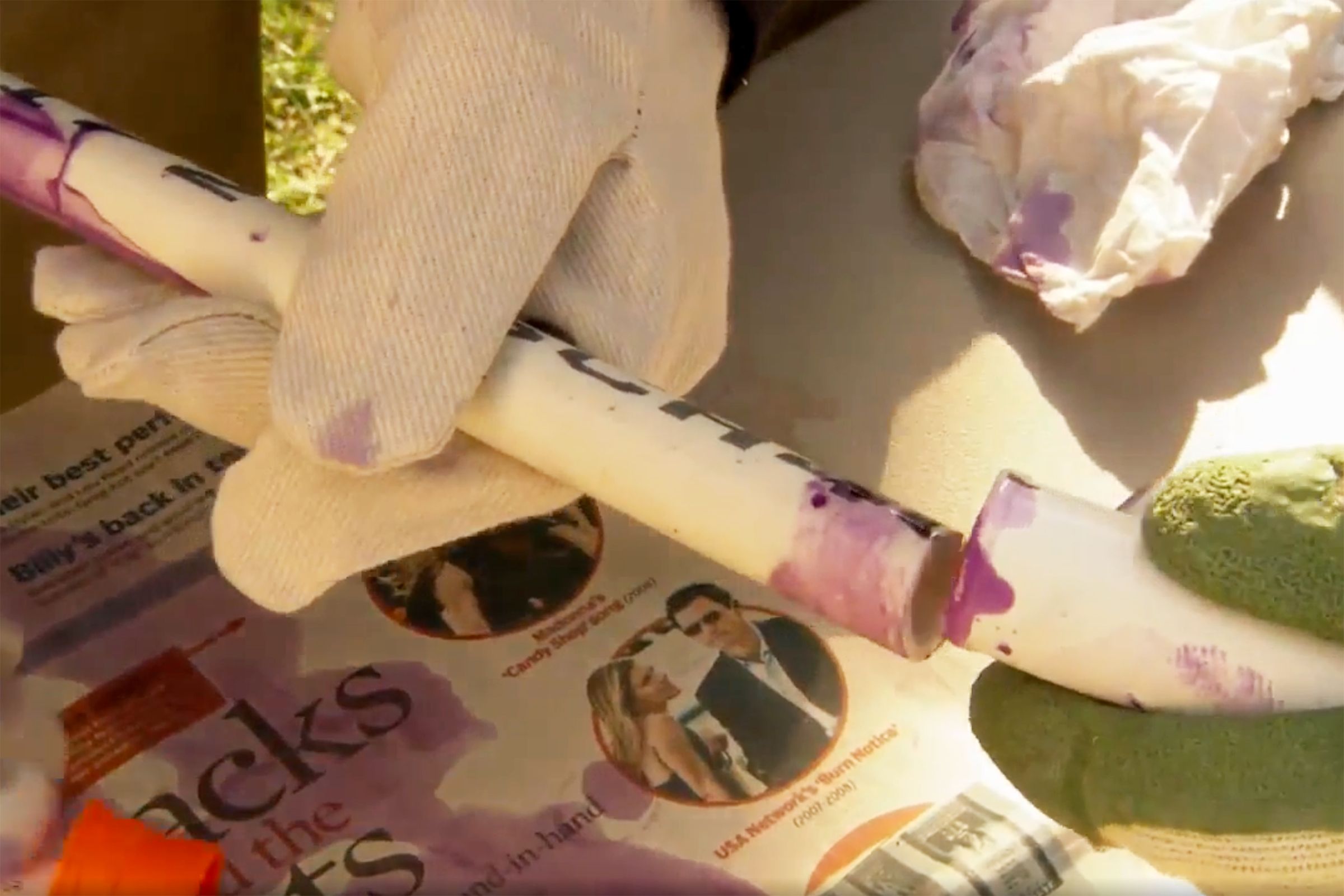
- Line up the pipe sections and connectors in the order you’ll assemble them: solid end cap, 18-inch piece, tee, 78-inch piece, and the 2-inch piece connected to the leg of the tee.
- Using PVC pipe cleaner, clean both parts of each connection: the outside of the pipe and the inside of the fitting.
- One by one, glue the connections together with PVC pipe cement, holding the parts together for a few seconds as the cement sets.
NOTE: Always work in a well-ventilated area when working with pipe cement.
Step 5: Make a seal for the bottle
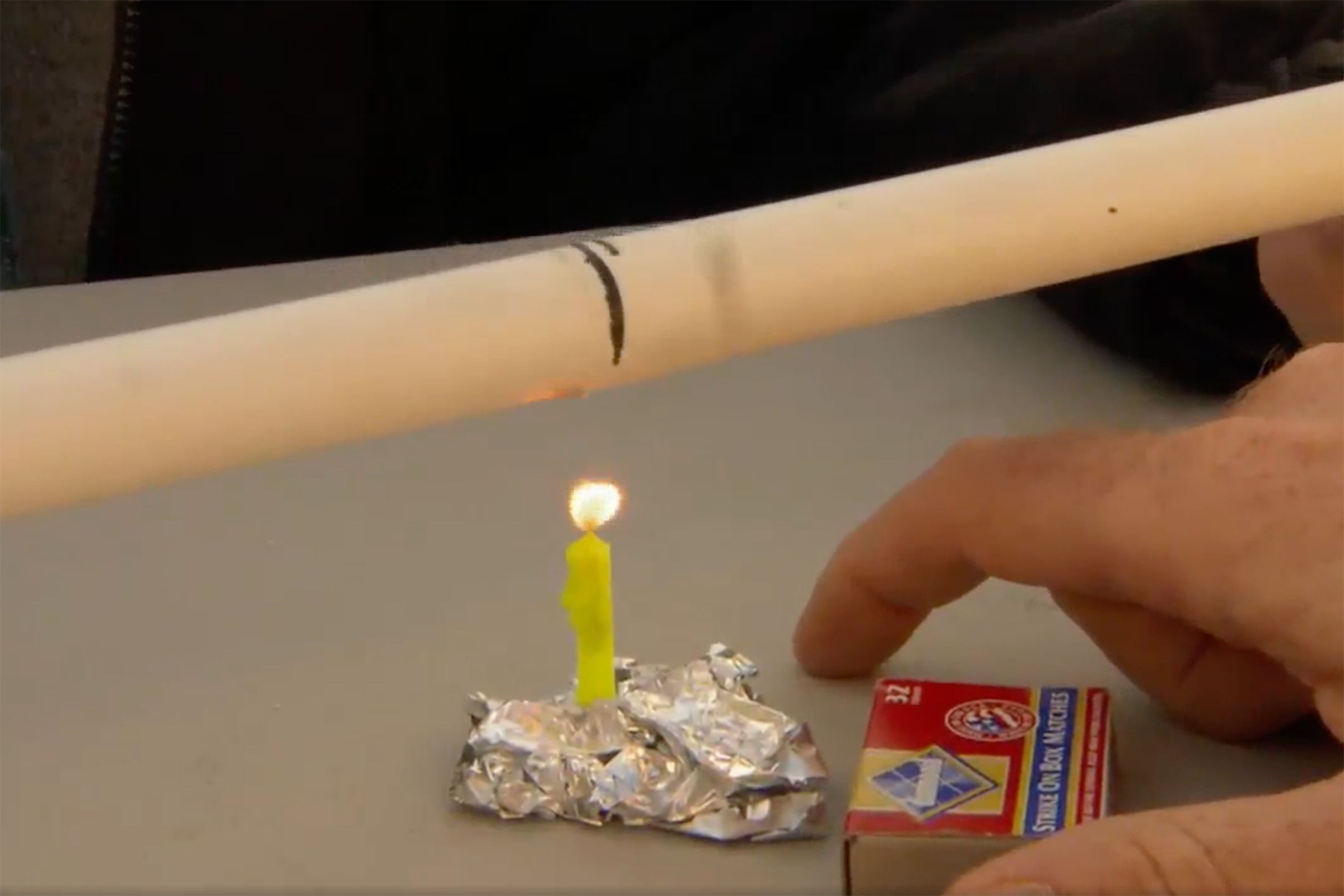
- Mark the pipe assembly 11 inches from the long open end.
- Using the flame of a birthday candle, heat the pipe evenly at this mark until it becomes soft. Then, push the pipe inward to create a slight bulge.
- Hold the pipe straight until it has cooled and the bulge is no longer soft. This bulge will create a seal between the pipe and the soda bottle.
Step 6: Build a clamp for the bottle
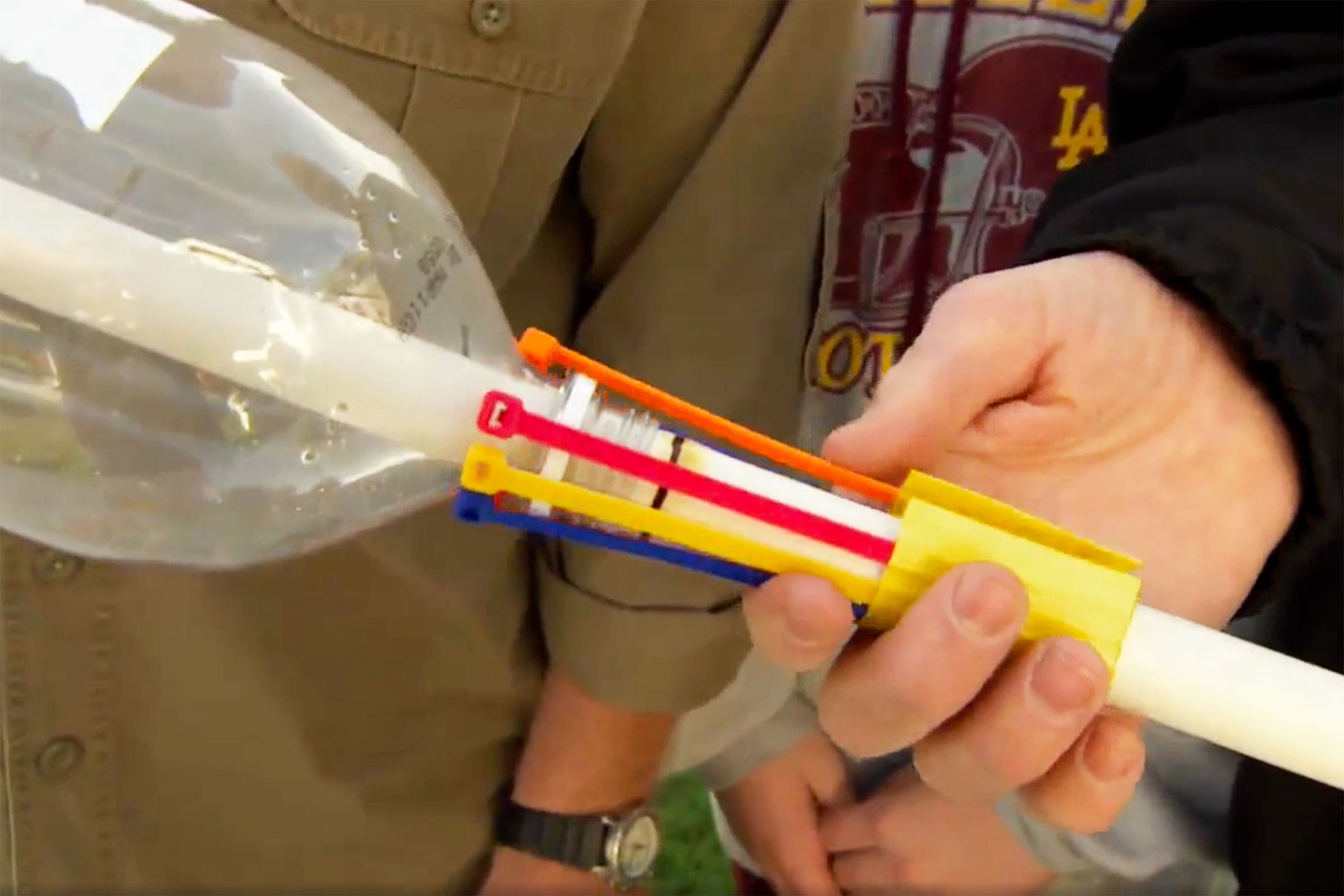
- Using duct tape, tape nine cable ties together so they all face in the same direction. Line up the cable ties parallel to each other and make sure their heads are even and level. Tape over both sides so that no adhesive is showing.
- Slide a soda bottle over the end of the pipe and seat it against the bulge. Wrap the cable ties around the pipe so that the head of each tie faces inward and catches the lip of the bottle, holding the bottle tight to the bulge.
- Secure the cable ties in this position by tightening the hose clamp around the duct tape.
Step 7: Make a launch trigger
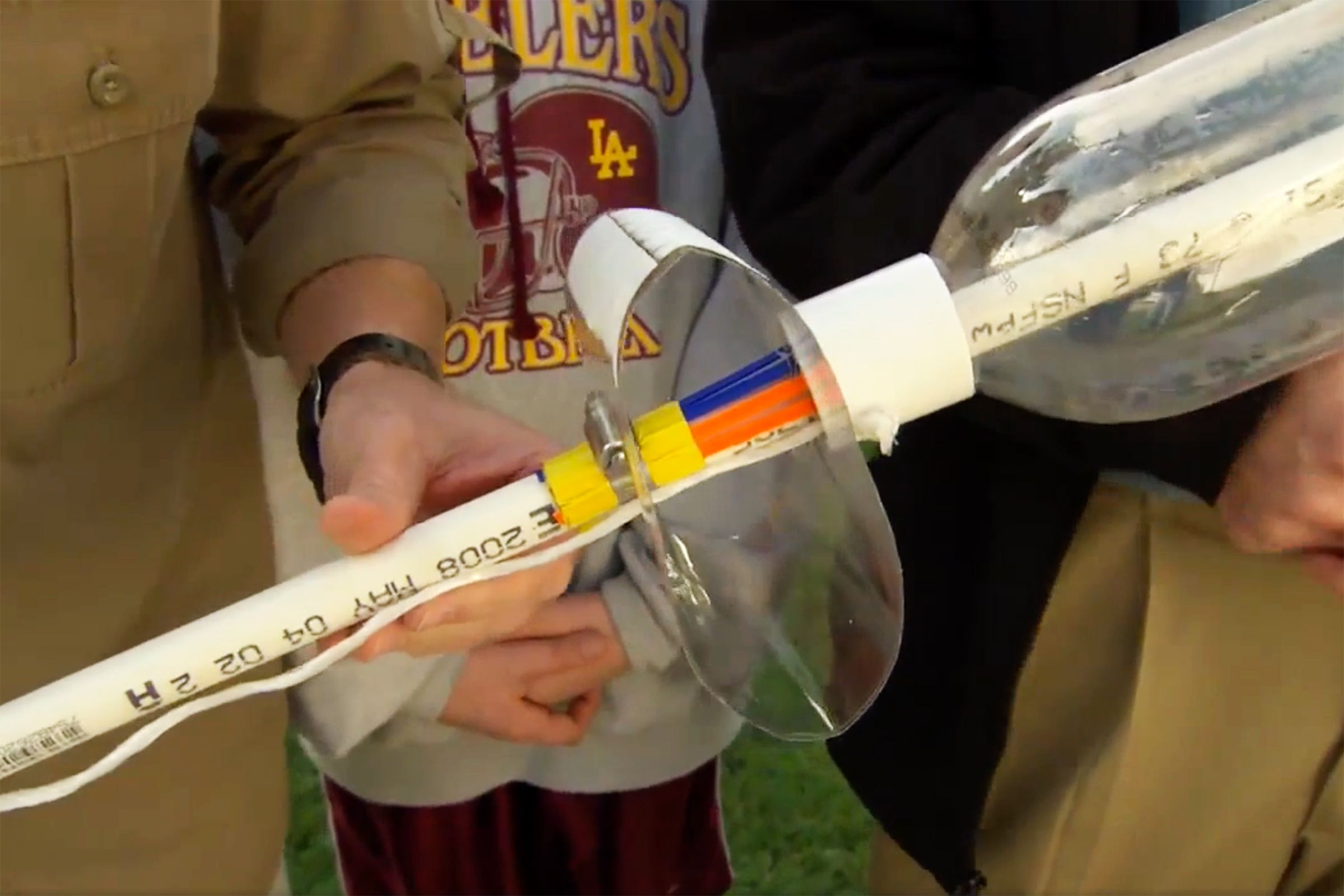
- Using scissors, cut the top and bottom off a 2-liter soda bottle. Flatten the bottle section without creasing it and cut a 1¼-inch hole through both sides. This spring will hold the trigger in position until you’re ready to launch.
- Drill a small hole in the side of a short scrap of 1½-inch PVC pipe. Thread the end of a 4-foot piece of string through the hole and tie a knot to keep it from coming out. This pipe is the trigger.
- Remove the bottle from the end of the pipe. Slide the plastic spring onto the pipe, over the cable ties, and up against the pipe clamp. Then, slide the 1½-inch PVC scrap over the pipe and cable ties. Thread the string through the holes in the plastic spring. Securely tape the other end of the string to the pipe with duct tape.
- Test this trigger mechanism by pulling on the string. The PVC trigger should drop, allowing the cable ties to open up. When you let go of the string, the spring should push the trigger up and over the cable tie ends.
Step 8: Prepare for launch
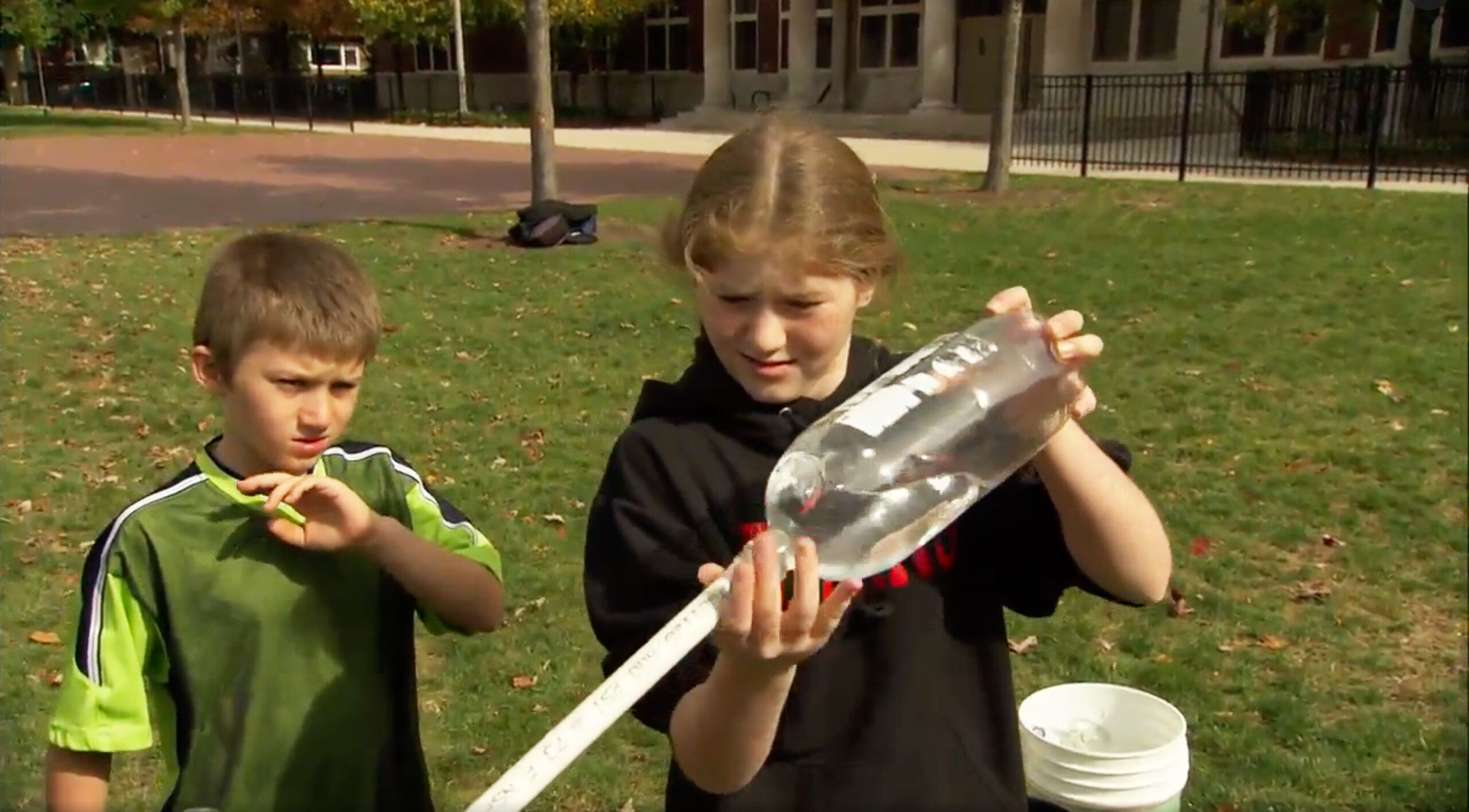
- Fill a 2-liter bottle about one-third full of water and slide it onto the end of the pipe.
- Pull the string on the trigger down so the bottle can sit against the bulge and the cable ties can catch the bottle’s lip.
- Release the string and let the trigger slide back over the cable ties to hold the bottle in place.
Step 9: Pressurize the launcher
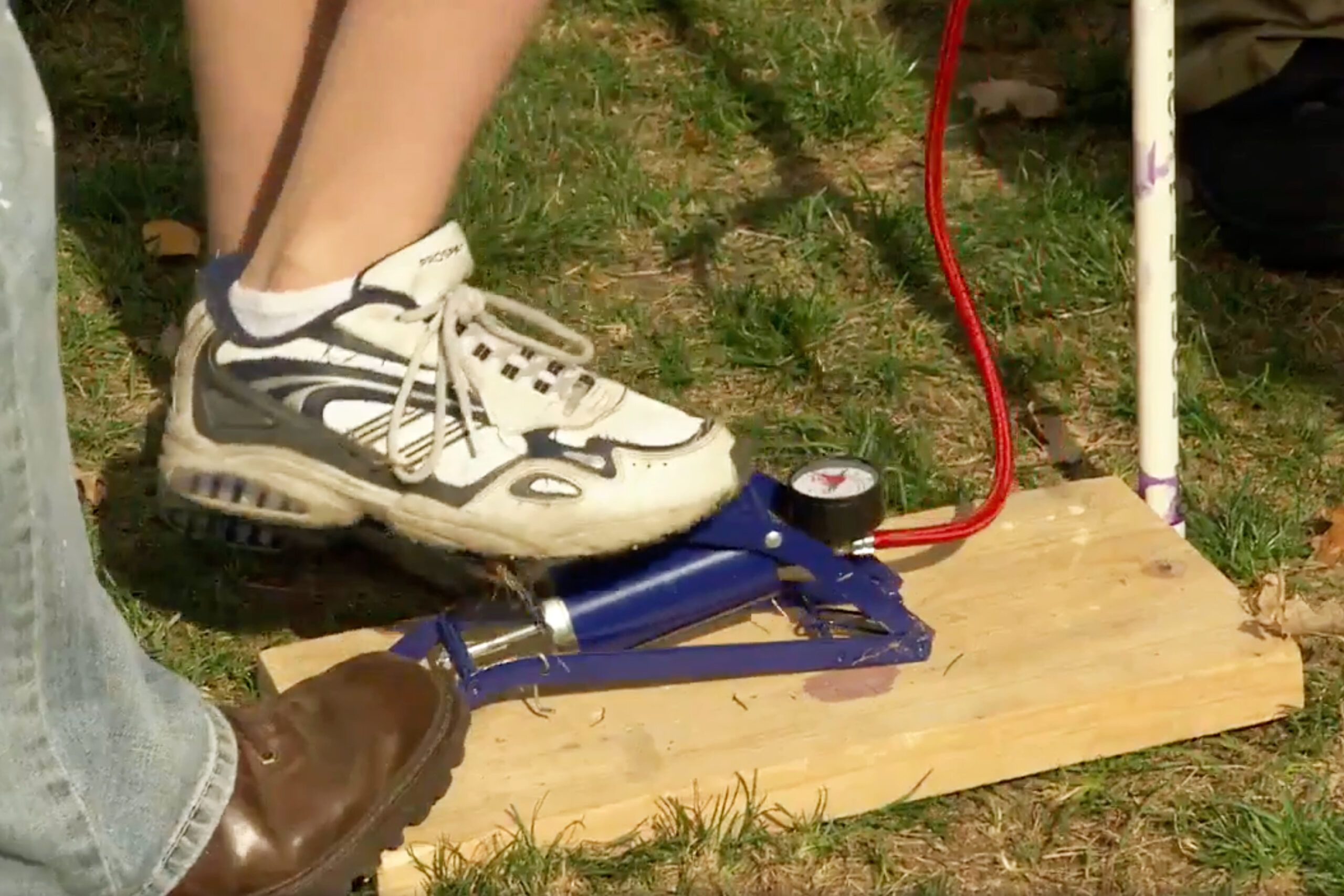
Attach a bicycle pump to the valve coming out of the tee. Pump no more than 70 psi into the launcher.
Step 10: Launch the rocket
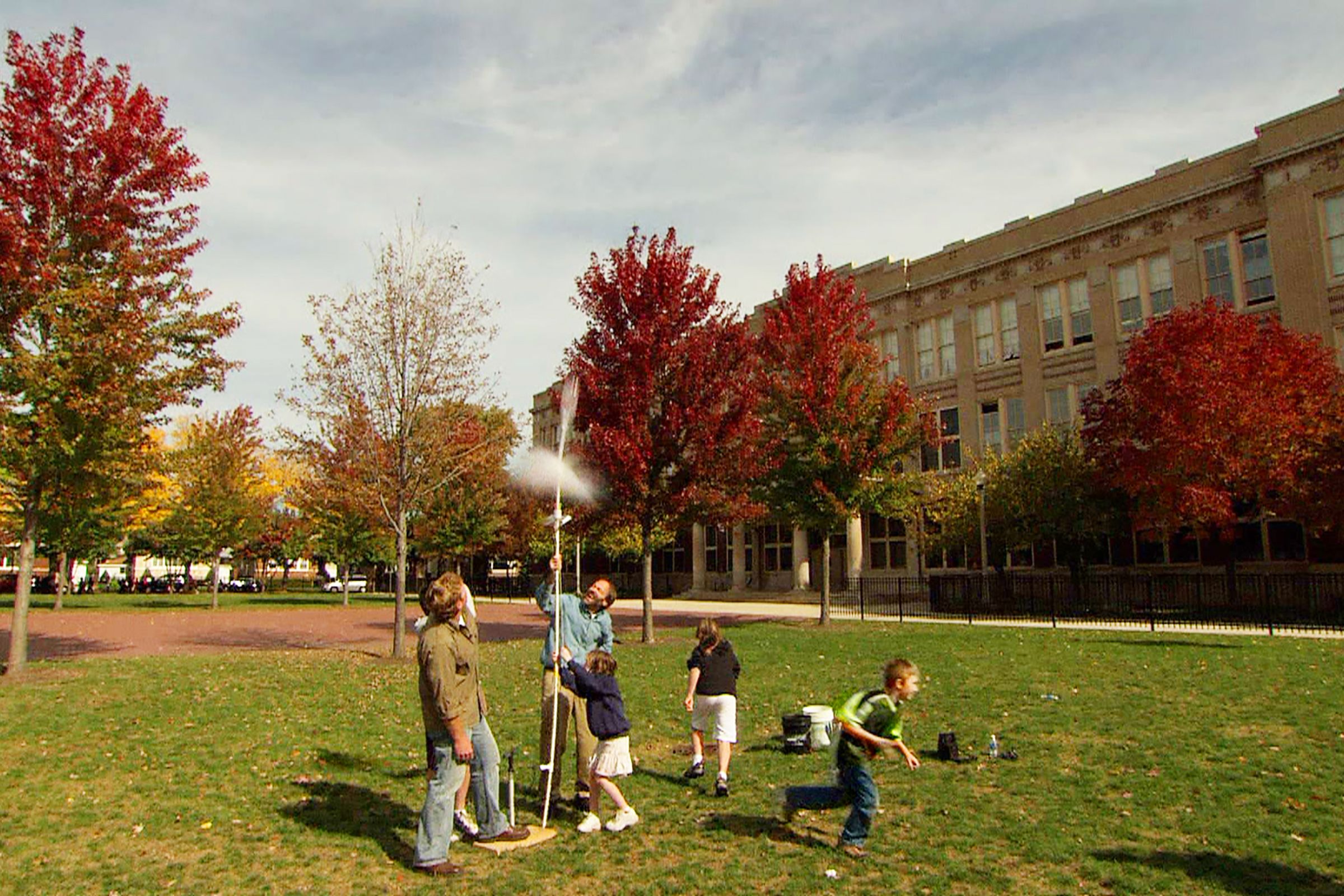
NOTE: Point the launcher straight up and ensure an adult is supervising the launch.
Then, count down, pull the string, and blast off!
Safety Considerations
When building and launching water rockets, keep these safety tips in mind.
- Always have adult supervision during construction and launches.
- Avoid launching in windy conditions that could affect the rocket’s trajectory.
- Launch straight up at the sky in an open area, away from buildings, power lines, and people.
- Never exceed the recommended pressure of 70 PSI.
- Wear safety glasses to protect your eyes from potential debris.
Enhancing Your Water Rocket
Enhancing your water rocket project can take your experience to the next level. Here are three methods to consider.
Adding Fins
Crafting fins from lightweight yet sturdy materials like plastic or thin cardboard helps stabilize the rocket’s flight and maintain an upright trajectory. Attach the fins evenly around the base of the bottle using strong adhesive tape or glue, ensuring they are symmetrical and aligned. Experimenting with different sizes and shapes can fine-tune the rocket’s stability and distance.
Adjusting the Water-to-Air Ratio
The balance between water and air pressure within the rocket determines its launch height and performance. Start with the recommended one-third water fill and observe the rocket’s launch. Gradually increase or decrease the water content to discover the optimal ratio for maximum altitude. Documenting various trials will aid in refining the water-to-air balance for future launches.
Customizing the Design
Enhance the look of the rocket by decorating the bottle with vibrant colors, designs, or labels. Use waterproof materials so that the decorations remain intact during flight.
Troubleshooting Common Issues
If your water rocket isn’t performing as expected, consider the following steps:
- Check all connections for leaks and reapply cement if necessary.
- Ensure the bottle is seated correctly against the bulge for a tight seal.
- Experiment with different water-to-air ratios in the bottle for optimal performance.
- Verify that the trigger mechanism is functioning correctly.
Our Conclusion
Building a water rocket is an engaging project that combines science, engineering, and fun. With simple materials and careful construction, you can create a launcher that sends bottles soaring into the sky. Remember to prioritize safety and enjoy the thrill of your homemade rocket taking flight.
